Inside: Each spring, our class of kindergarteners embarks on an eagle research project, and follows the day-to-day happenings of a bald eagle family, that we observe via a webcam.
Our Eagle Research Project Path
Some projects are just too good not to repeat each year. That’s how I feel about our eagle research project. Using the Decorah eagle cam, found on Explore.org, we are able to get up close and personal with these amazing creatures and learn a ton about our national bird, using mostly our powers of observation and inquiry.
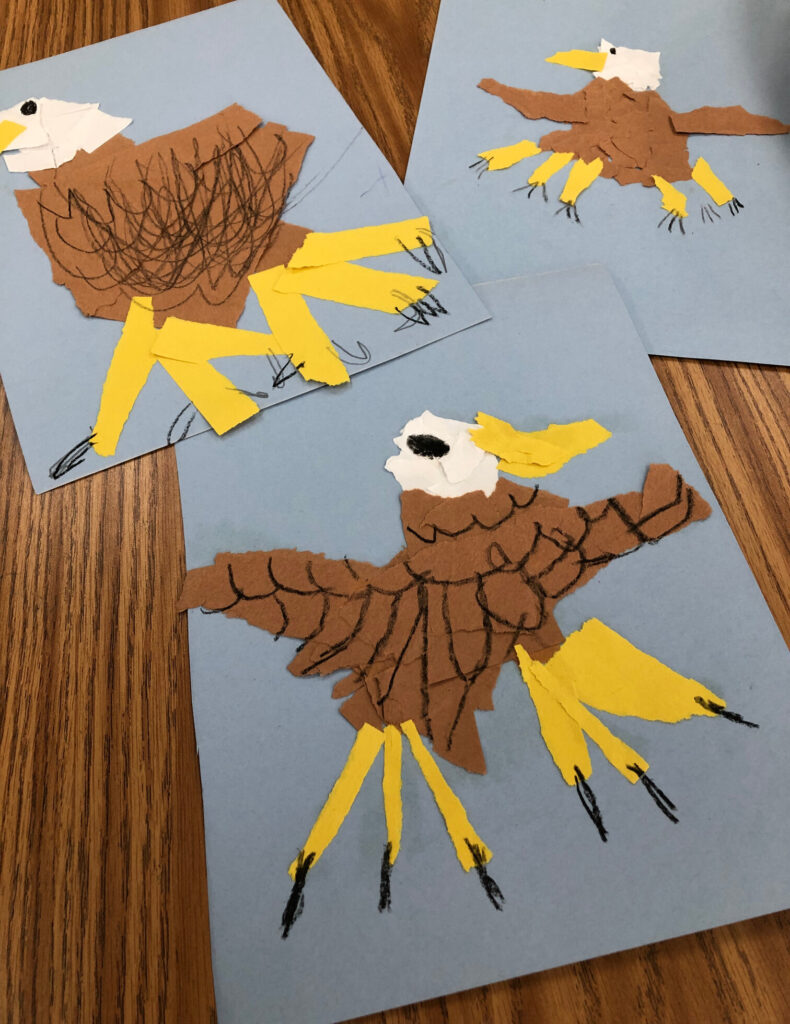
In this post, I’ll share the project path we take, from February to June, as we follow the day-to-day happenings of a bald eagle family.
February
It all begins around mid-February, when I check to see if the eggs have been laid. I usually can’t tell by looking at the webcam, because the eagle is covering the eggs. But I check the hatch diary at the Raptor Resource Project, and it tells me the exact date and time that the eggs were laid as well as the number of eggs. Eagles lay from 1-3 eggs each year.
Once I know the eggs are there, I turn it on and show it to the children. I say absolutely nothing about what they are viewing and just let them observe and comment. I structure the sharing using a thinking routine called, See, Think, Wonder. Children choose the prompt they want and then share their comment.
They usually don’t spot the eggs on this first viewing, but someone will predict that there are eggs in the nest. We talk about what kind of bird they think it is and when someone mentions eagle, I don’t confirm anything, (we’ll use books for that), but ask what kind of eagle they think it is.
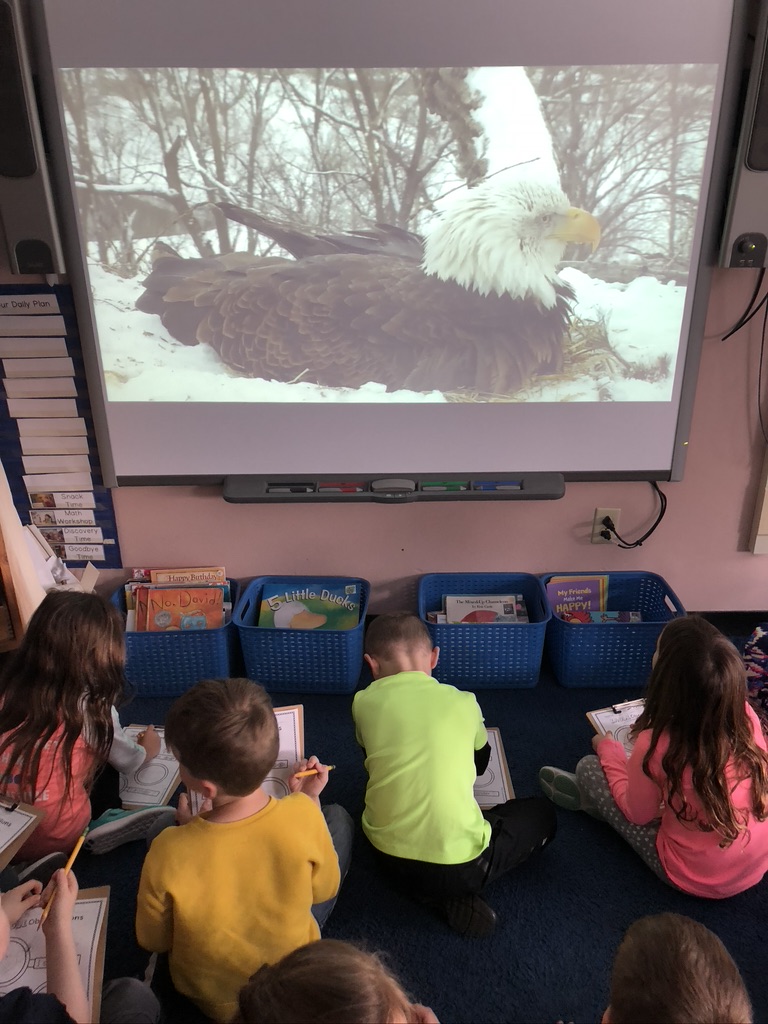
On the second viewing, I give them an I See, I Think, I Wonder paper and they draw and write their observations. I then take all their “wonders” and sort them into 4 categories: body features, habitat, diet, and life cycle. These subtopics will guide our research in the months ahead.
We set up a research center in our classroom, where we store all of our eagle books, artifacts, models, notes, and more.
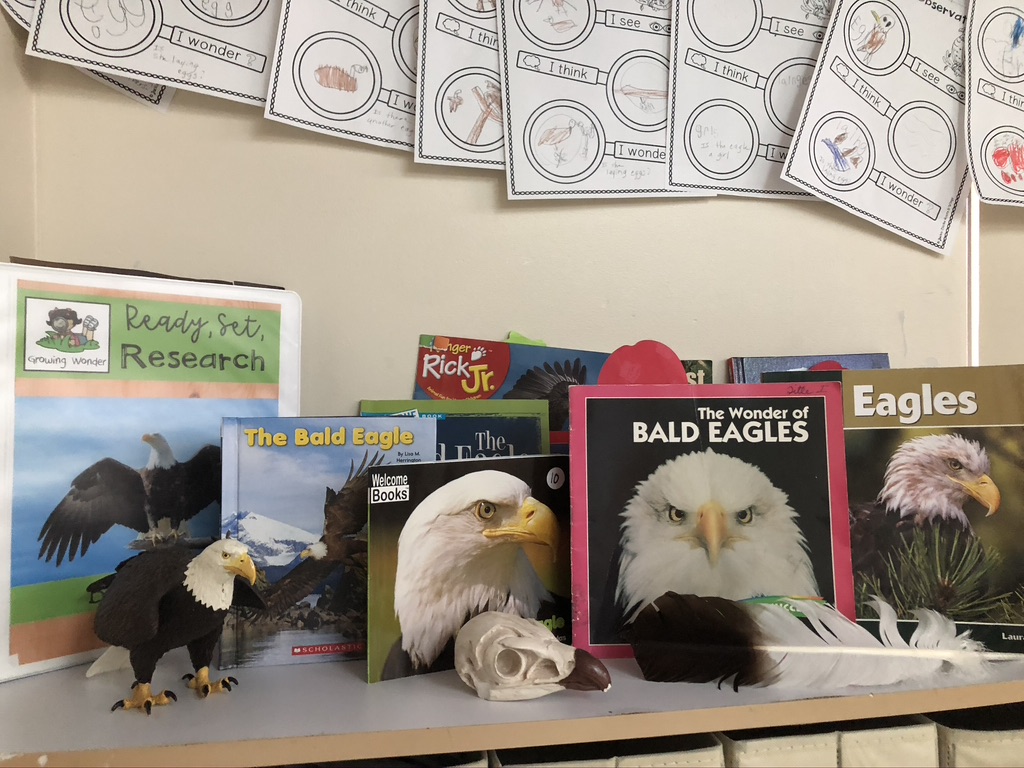
March
We continue to turn on the webcam periodically in the month of March and each time we do, we learn new things. At this point, we’ve seen the eggs, know how many there are, know that they are white, and can compare their size to other birds’ eggs. The eagle egg is the fourth one from the right.

We learn about the body features of an eagle and do realistic drawings that help us zoom in on small details such as the shape of the hooked beak or the number of talons.
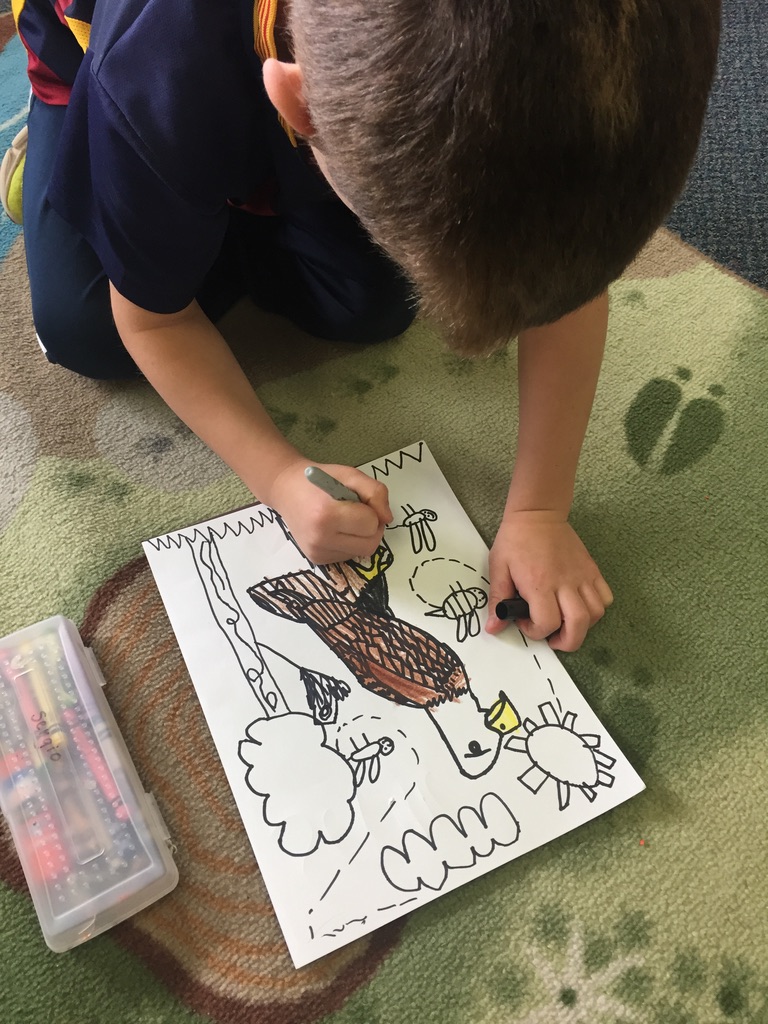
We measure an eagle’s wingspan and compare it to other birds as well as our own.

We continue to use the webcam, along with books and websites, to answer our questions. One question that comes up every year is, “Which is the boy eagle and which is the girl?” We learn the words male and female and read that the female is a bit bigger than the male. However, since they are rarely in the nest together, it is very difficult for us to compare them to see which is larger in size.
We learn more about the eagle nest and compare its size to that of other birds.
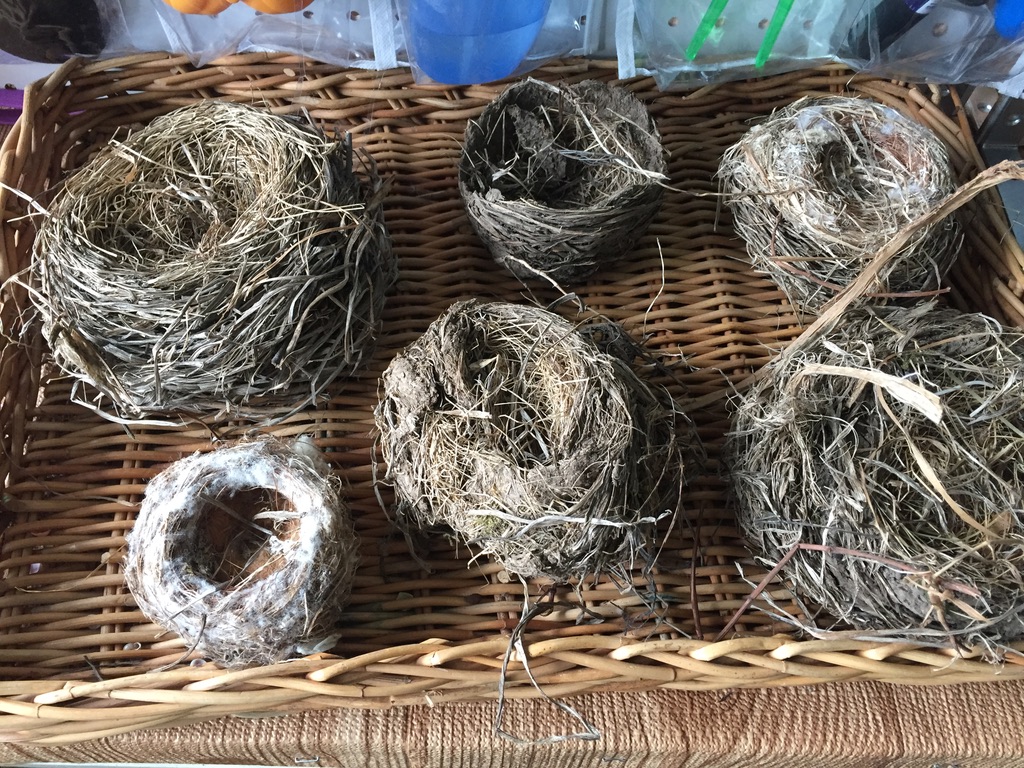
I take the kids outdoors and draw one circle on the pavement to show the average size of an eagle’s nest as well as the biggest eagle’s nest ever found. It’s a little difficult to see just how big the nest is on the webcam, so this gives them perspective. The eagles mate for life and return to the same nest year after year, building upon it each time.
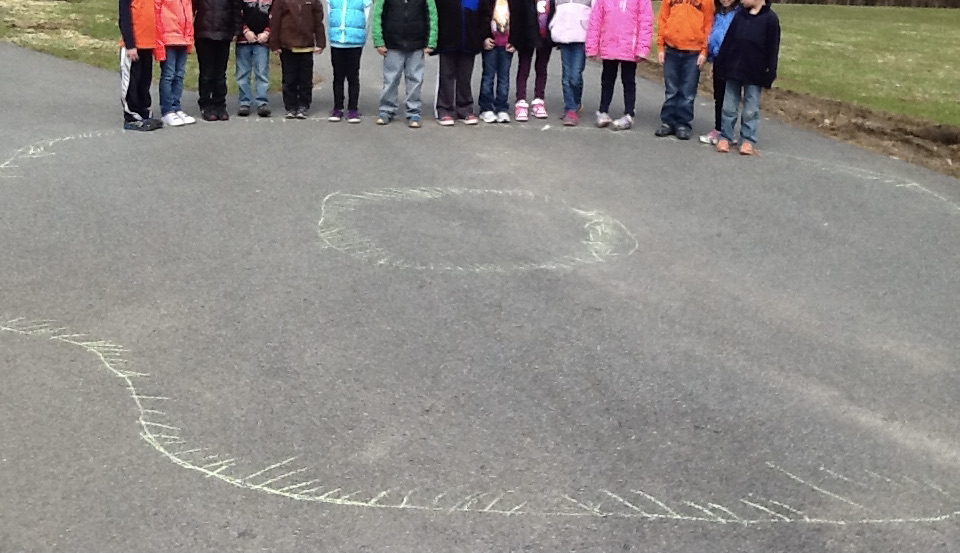
I begin to add “eagle” things to their choice centers for children to use in their play. It’s fun to see how they apply what they have learned about eagles to their art, block structures, pretend play, and more.
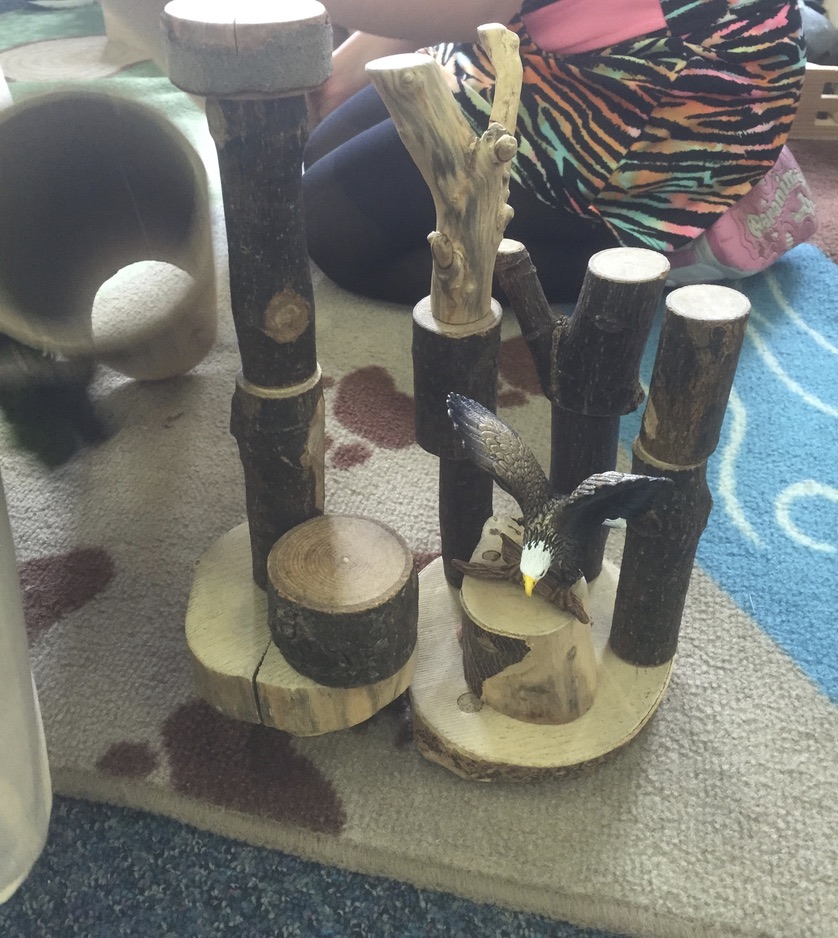
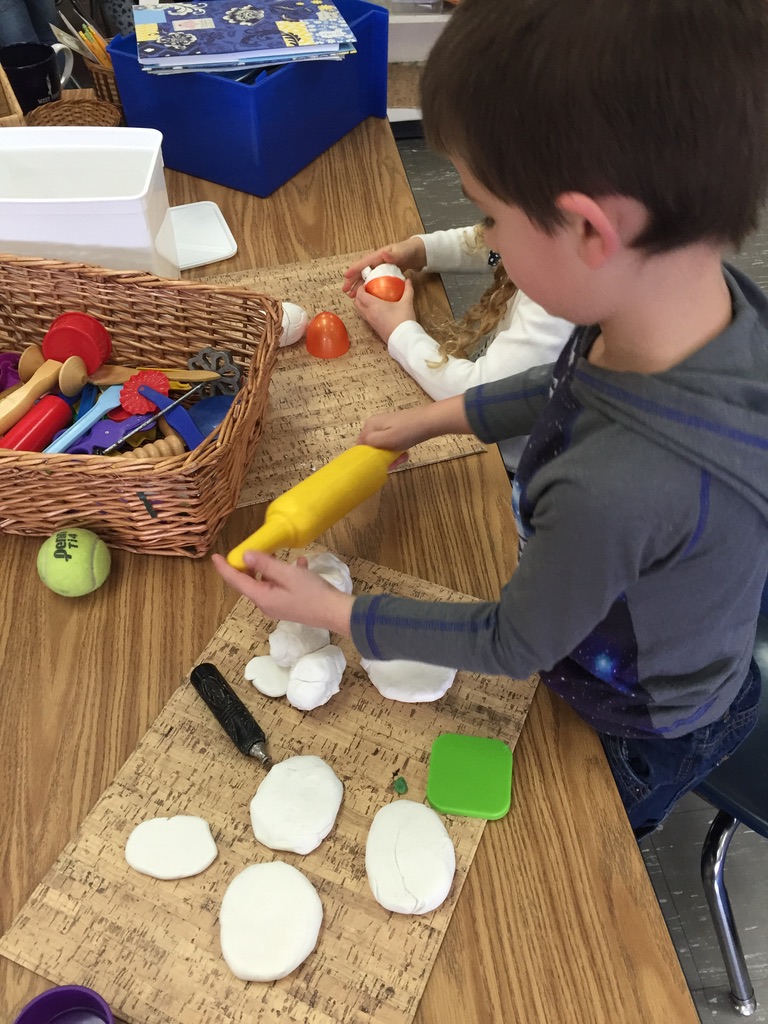
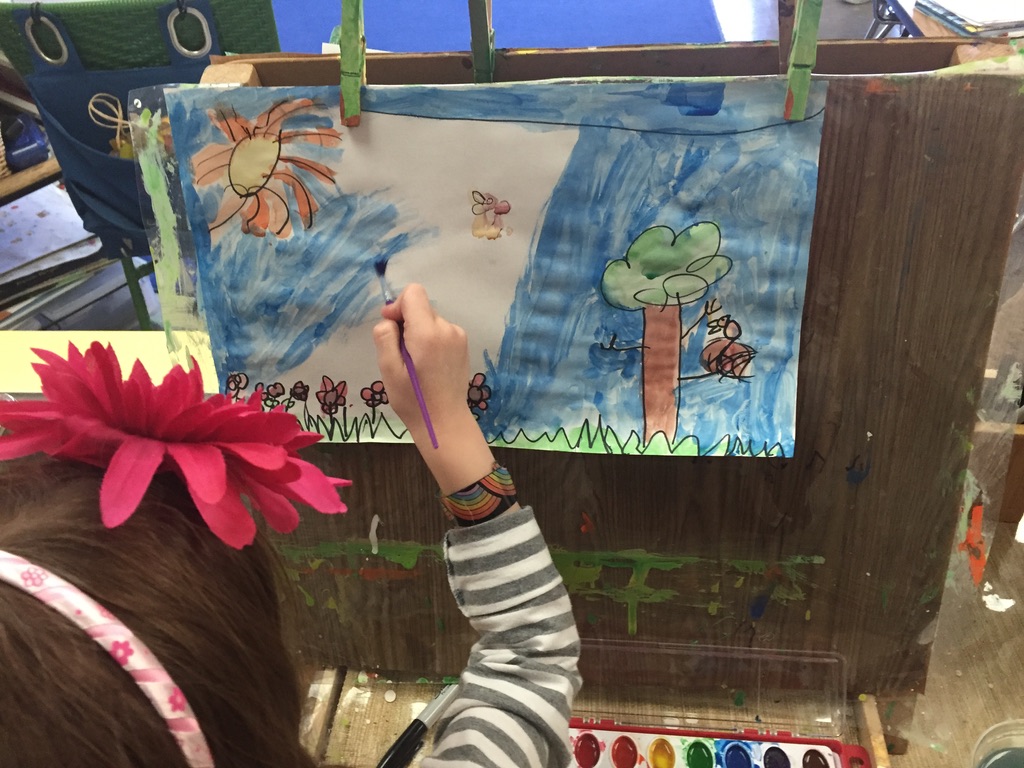
April
“Hatch Day” usually occurs in mid-April and we mark it on our calendar. We check the webcam a little more frequently now as we are anxious to see the eaglets appear. If we happen to be on spring break when they hatch, we can always catch the replay on the Raptor Resource Project, which does a great job of documenting the highlights of the Decorah eagle family.
There are years when not all of the eggs hatch and the children have questions that are less scientific and more of a “heart wonder.” We explore these questions too and I let them draw their own conclusions.
Once the eaglets hatch, we observe how quickly they grow and change. We begin to notice color and size changes each week.
We continue to draw eagles and write poems about them, incorporating our webcam observations.
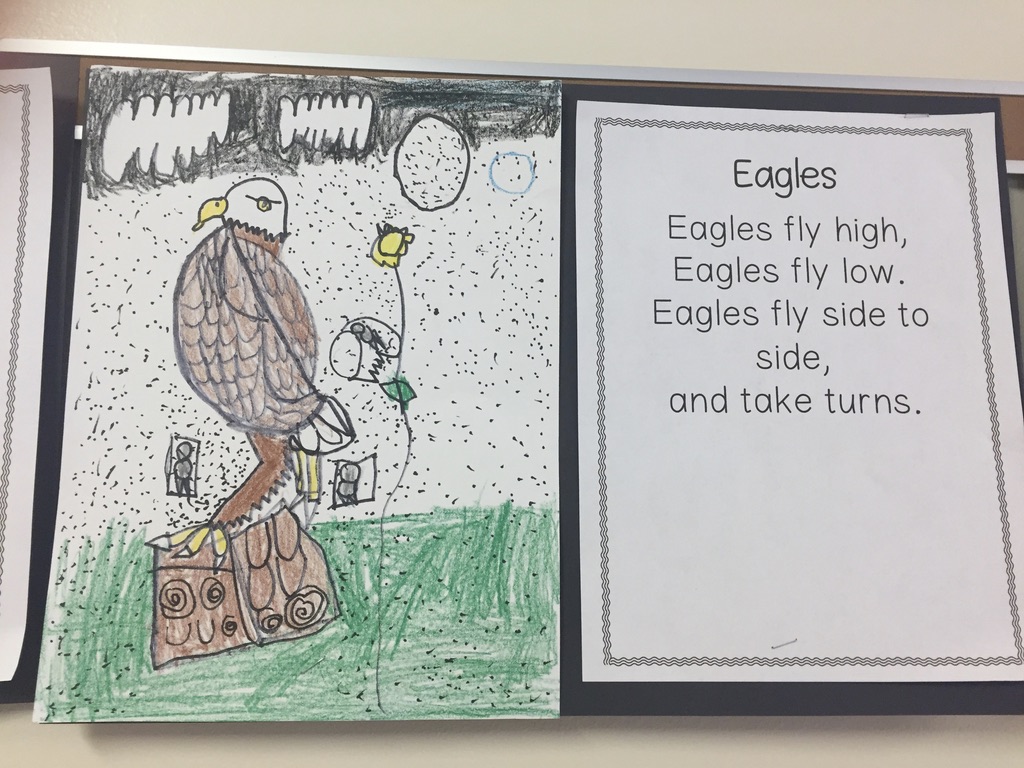
The children sign up for research groups and work together to gather more information about each of the subtopics to prepare us for the writing we will do next month.
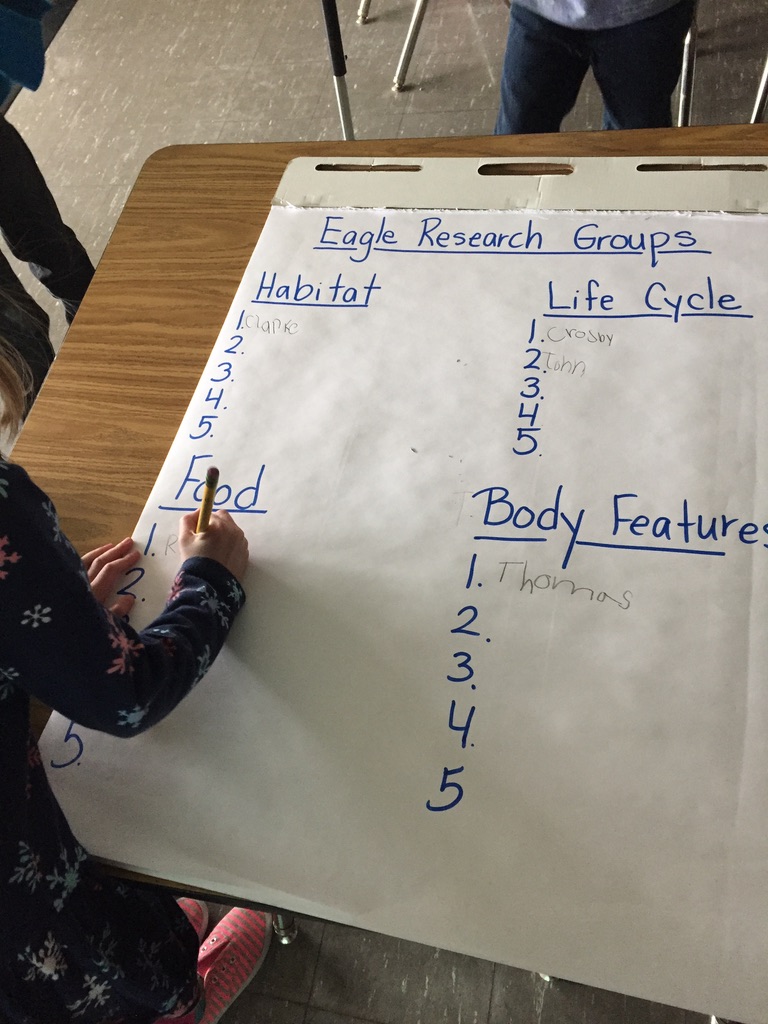
May
By May, we are eagle experts. We know all about their body features, habitat, life cycle, and diet, and have watched most of it firsthand via the webcam. We’ve found answers to all of our questions and have applied what we’ve learned into our play. We gather all our notes and are ready to write our informational books about eagles.
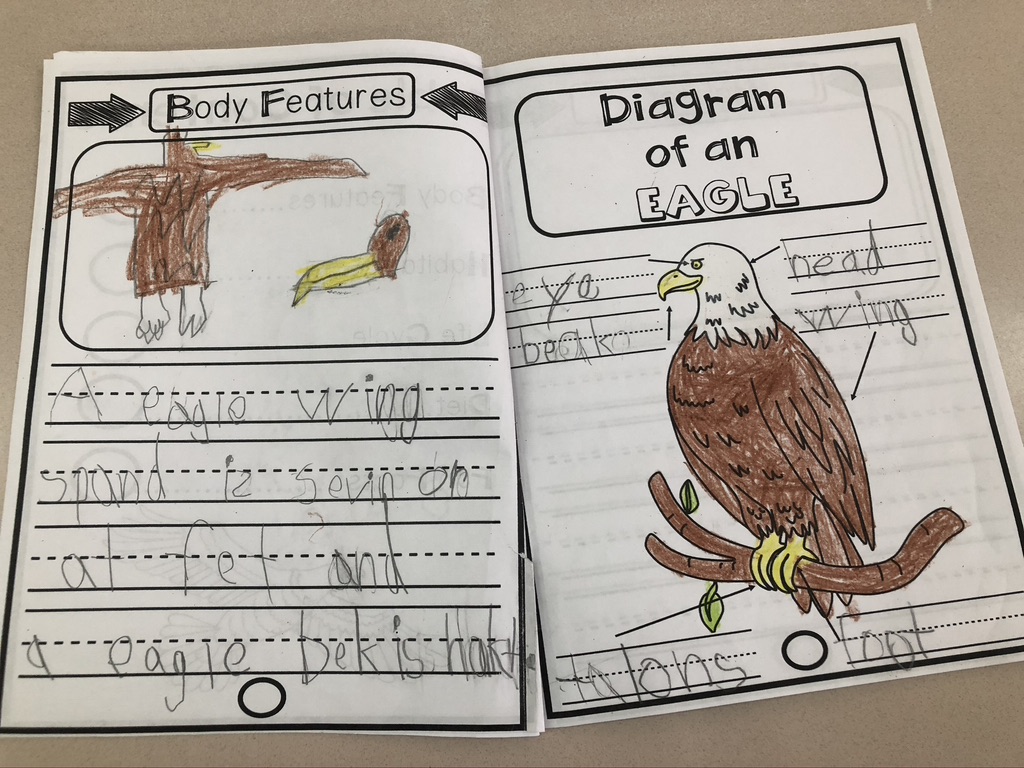
Most children are able to do this with ease, because they are writing about something they know and love and have much to say.
The research groups we formed in May, now work together to create visuals that we use to share what we have learned in the form of a presentation. They make life cycle posters, build habitats, create an eagle “menu,” and construct a life-size eagle.
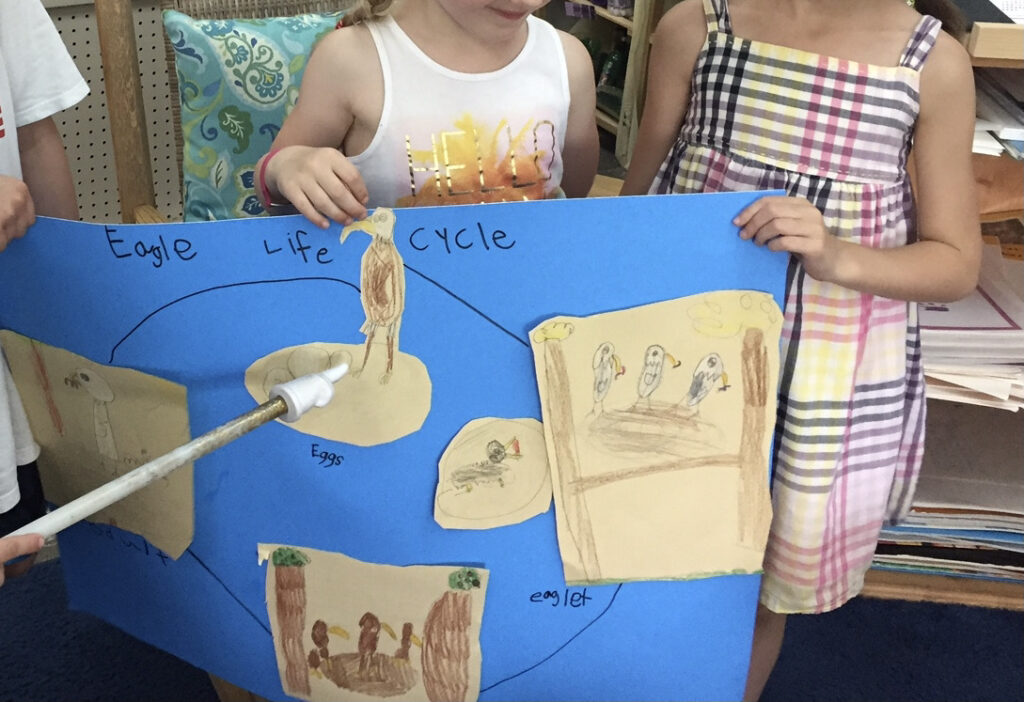
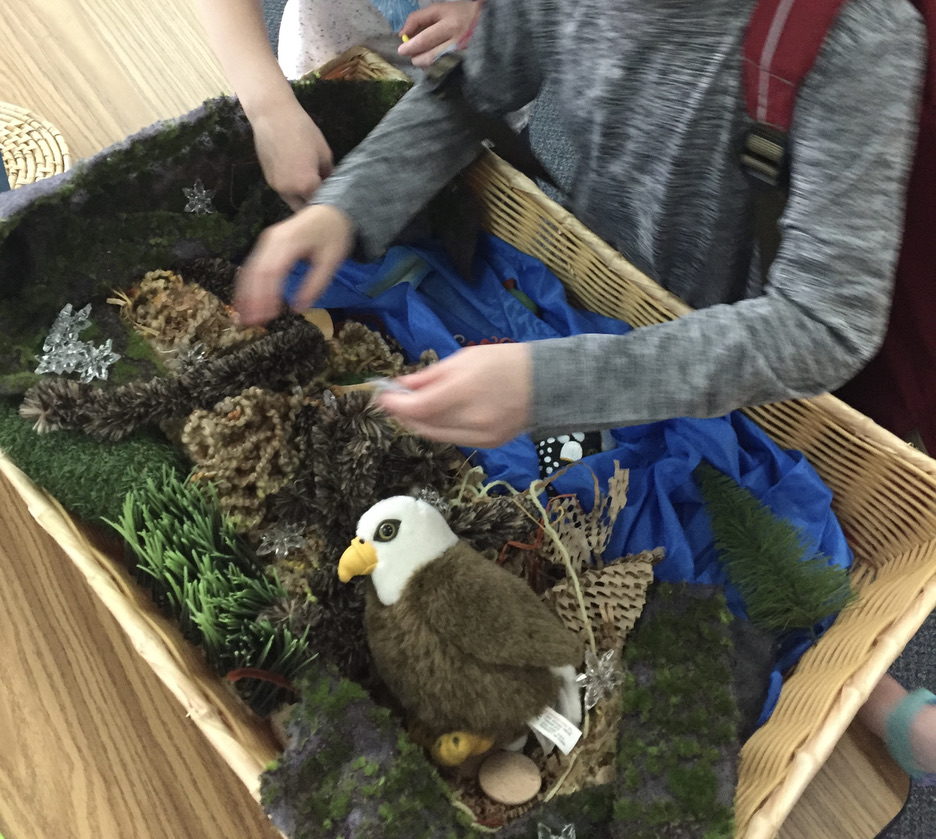
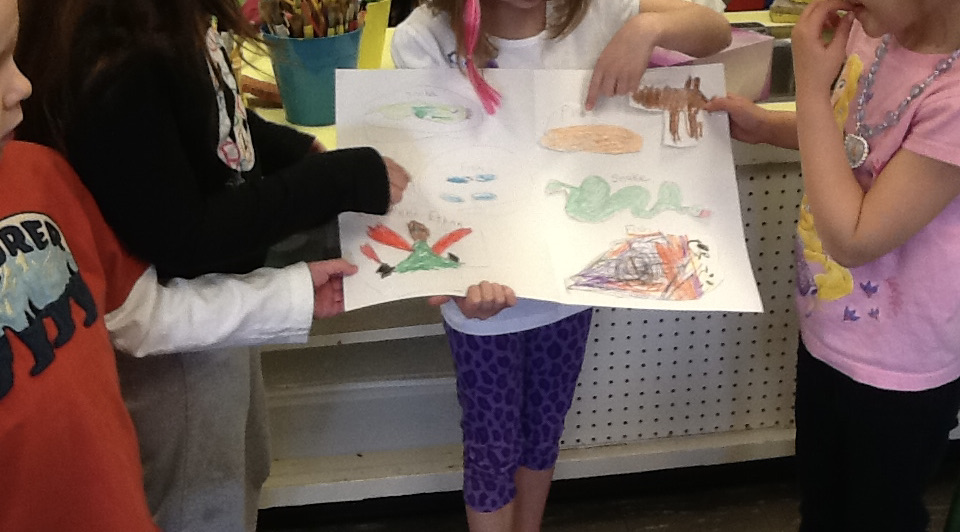
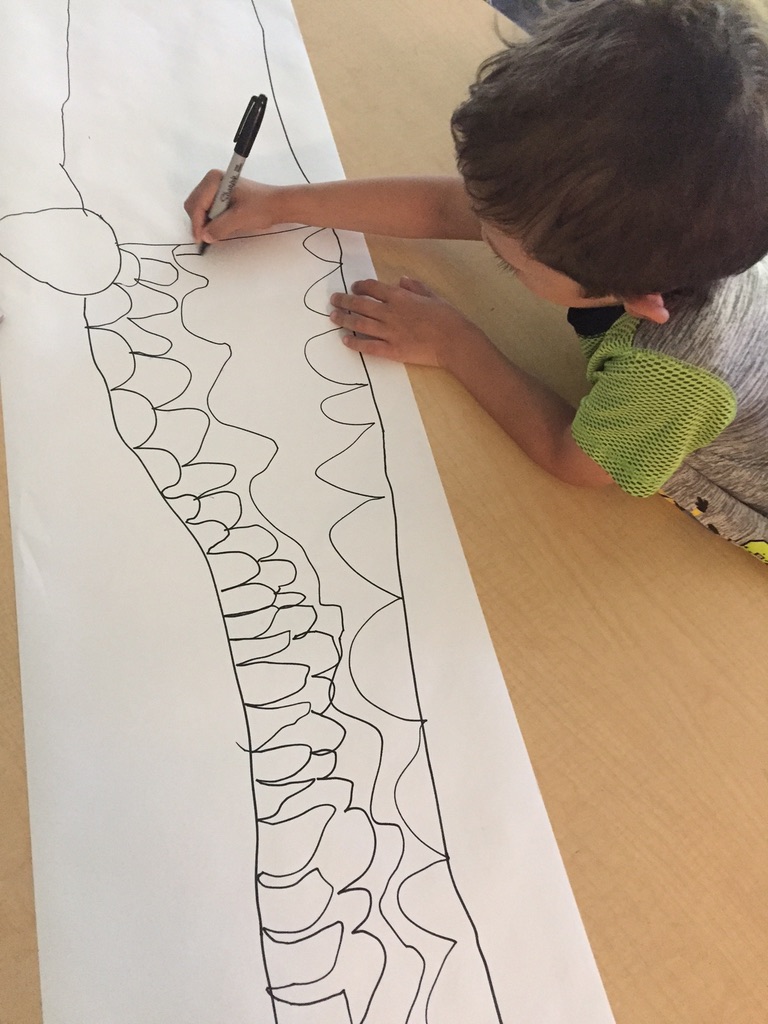
June
By June the eaglets are getting ready to fledge and so are my kindergartners. They too have grown so much and are ready to leave our “kindergarten nest.” The journey of the Decorah eagle family is one we have shared together and many children remember this as part of their kindergarten experience.
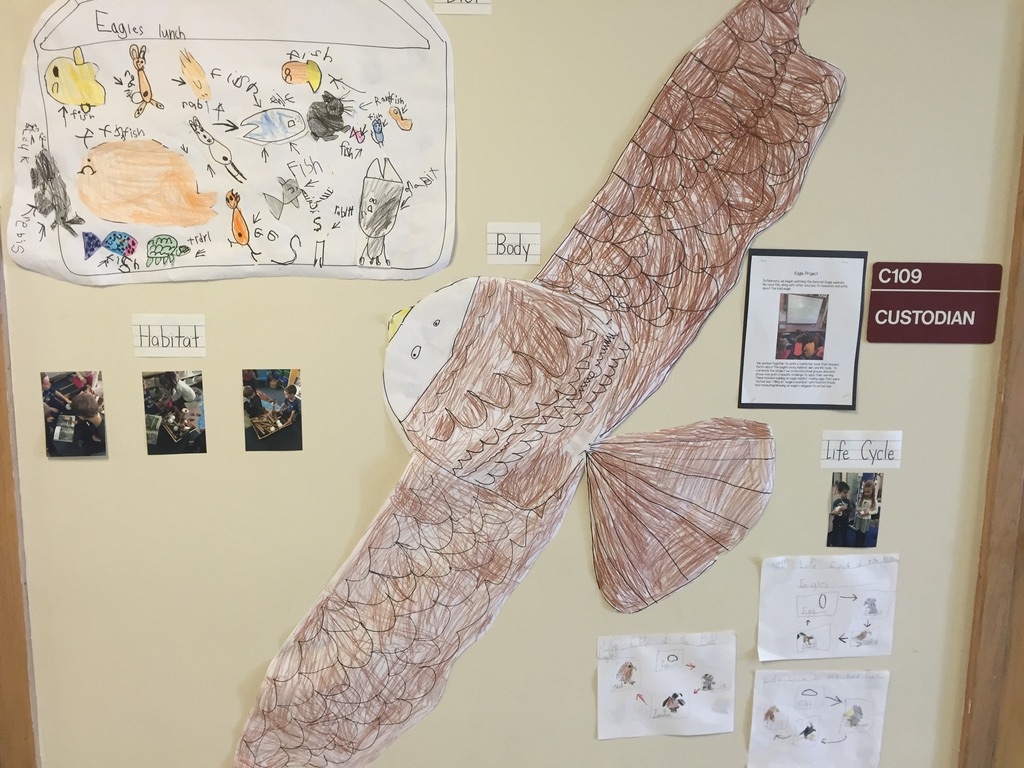
The Eagle Research Project Experience
Even though we were involved with this project for about five months, it was not time consuming and unfolded very naturally as we dipped in and out of it from February to June. While I structured this post in a chronological format, sharing anecdotes from each month, there was also a less visible structure, in the form of a Research Roadmap, that guided us through the research and writing process.
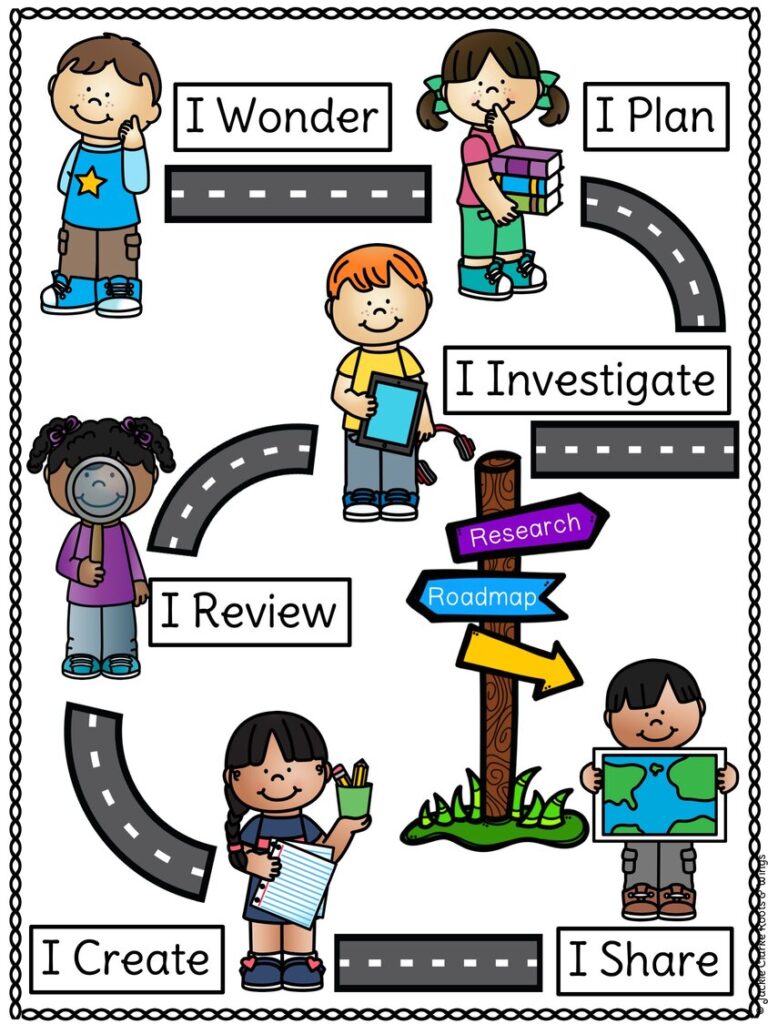
Read more about that in Animal Research Projects Step-by-Step, where you’ll see that in action. You can find this roadmap, as well as the writing forms shown here, in Ready, Set, Research: Eagles.
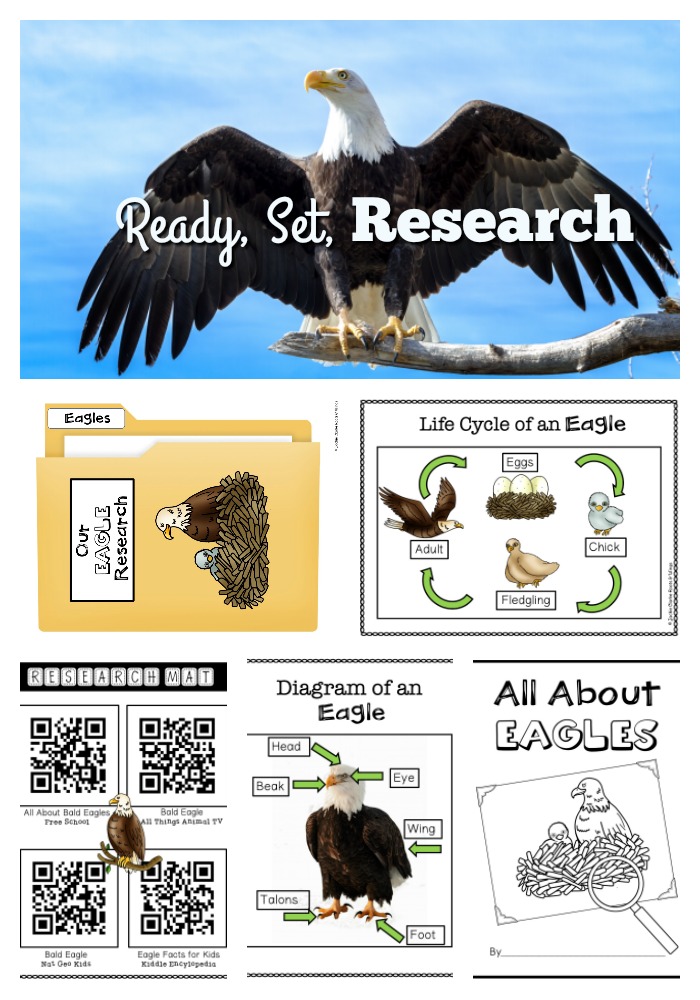
For more science and research ideas, visit the Growing with STEAM page inside the Roots & Wings Resource Library.
This post contains affiliate links. Roots & Wings is a participant in the Amazon Services LLC Associates Program, an affiliate advertising program designed to provide a means for sites to earn advertising fees by advertising and linking to Amazon.com.


 5 Must-Have Materials for Your Kindergarten Block Center
5 Must-Have Materials for Your Kindergarten Block Center A Peek Inside January Discovery Centers
A Peek Inside January Discovery Centers Animal Research Projects Step-by-Step
Animal Research Projects Step-by-Step Kindergarten Plant Unit: An Inquiry-Based Approach
Kindergarten Plant Unit: An Inquiry-Based Approach